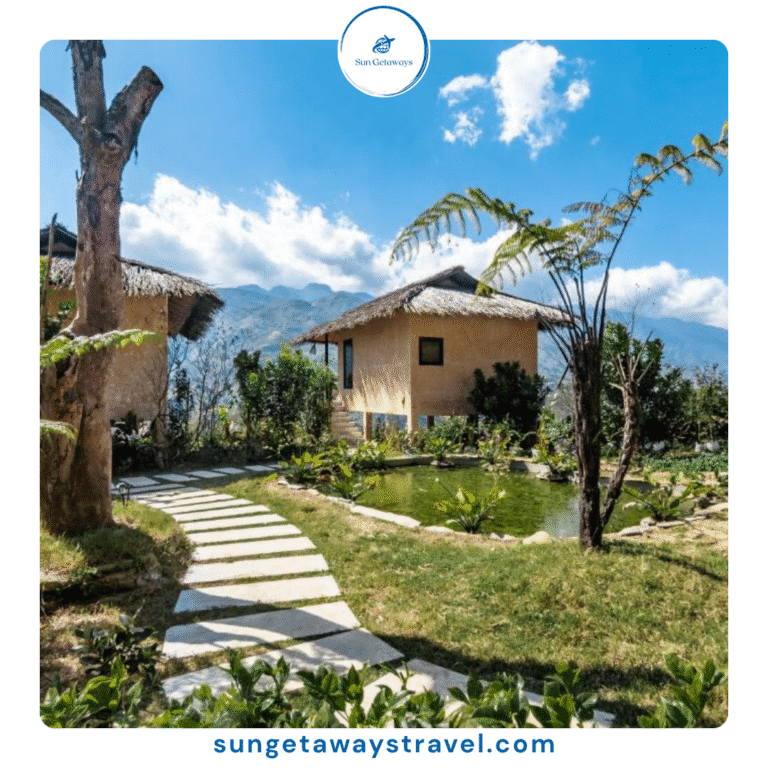More Than a Meal: Why Vietnam Culinary Experiences Are Unforgettable
To truly know Vietnam is to taste it. Here, food is not merely sustenance; it is a vibrant language of culture, a celebration of family, and the very soul of the nation. Embarking on Vietnam culinary experiences is a story told in a steaming bowl of Phở savored on a bustling Hanoi sidewalk at dawn, in the fiery, complex flavors of an imperial dinner in Hue, and in the sweet, tropical abundance of the Mekong Delta. The journey to find the best food in Vietnam is one of the most rewarding adventures a traveler can undertake, leading you down hidden alleys to recipes perfected over generations.
This guide is your passport to that world. We move beyond simple restaurant recommendations to explore the heart of Vietnamese culinary culture. We’ll dive into the controlled chaos of street food, uncover the distinct Vietnam regional specialties that define each part of the country, and introduce you to the immersive Vietnam culinary experiences that transform a meal into a memory. Prepare to embark on a journey that will delight your senses and leave you with a profound appreciation for the art of Vietnamese cooking.
🔑 Key Takeaways for Your Culinary Journey
- Embrace Street Food Culture: The heart and soul of Vietnamese cuisine lies on the street. Don’t be shy; pulling up a tiny plastic stool at a busy stall is often your ticket to the most delicious and authentic Vietnamese dishes.
- Explore Regionally: Vietnamese food is not one single entity. From the subtle broths of the North to the spicy seafood of the Center and the sweet herbs of the South, you must taste the differences to truly understand the cuisine.
- Trust Your Senses (and the Crowds): The best restaurants often have no fancy signs. Look for crowds of locals, listen for the sizzle of a hot wok, and follow the scent of fragrant herbs and grilling meat.
- Go Beyond Just Eating: To deepen your understanding, participate in a Vietnam food tour or a cooking class. These Vietnam culinary experiences provide context, stories, and skills that will enrich your entire trip.
1. The Heart of Vietnamese Cuisine: Street Food Culture
Nowhere is the pulse of Vietnam more palpable than on its streets, and street food is its rhythm. This is not just fast food; it is a sophisticated culinary system built on freshness, specialization, and community. A single vendor might spend their entire life perfecting one dish, serving it from the same spot every day. This dedication is why the street is often where you’ll find the absolute best food in Vietnam.
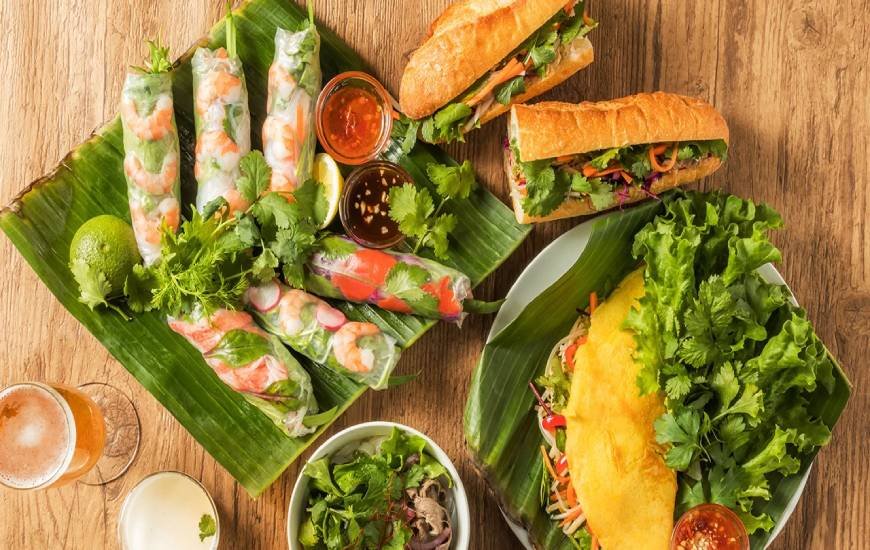
Why Street Food is a Must-Try in Vietnam
Ignoring street food is like visiting Paris and skipping the Louvre. It is an unmissable cultural institution where you can experience the incredible diversity of authentic dishes for a fraction of the cost of a restaurant meal. The flavors are often bolder, the recipes more traditional, and the atmosphere more vibrant. Exploring Vietnamese street food at night is an exhilarating experience, showcasing a different side of the city. When you explore Vietnam’s street food delights, you unveil the authentic flavors that locals enjoy every day. It’s no wonder that food is consistently listed among the top things foreign visitors love about Vietnam.
Tips for Enjoying Vietnamese Street Food Safely
For first-time visitors, diving into street food can be daunting. But with a few simple tips, you can navigate this exciting world confidently. This is your essential mini-vietnamese street food guide.
- Follow the Crowd: A busy stall with a high turnover of customers (especially locals) is your best guarantee of freshness and quality.
- Watch the Process: Choose vendors where you can see the food being cooked. Look for clean work surfaces, fresh-looking ingredients, and separate utensils for raw and cooked items.
- Cooked is King: If you have a sensitive stomach, stick to dishes that are cooked to order in front of you, such as noodle soups, grilled meats, or fried cakes.
- Stay Prepared: Our guide to staying healthy in Vietnam has more in-depth advice on food and water safety.
2. Regional Culinary Delights: A Journey Through Vietnam’s Flavors
Vietnam’s elongated shape has created three distinct culinary zones, each with a unique climate, history, and flavor profile. Exploring these Vietnam regional specialties is like taking a delicious journey through the country’s geography and soul.
Northern Vietnamese Cuisine: Subtle & Balanced
The North, the cradle of Vietnamese civilization, has a cuisine characterized by refined, subtle, and balanced flavors. For a deep dive, you can indulge in Hanoi’s street food, which is the heart of the capital’s culinary scene. While street food is king, the city also has incredible upscale options, as seen in Hanoi’s top fine dining restaurants. The region is also very accommodating to dietary needs, with many options in our guide to Hanoi’s best vegetarian restaurants.
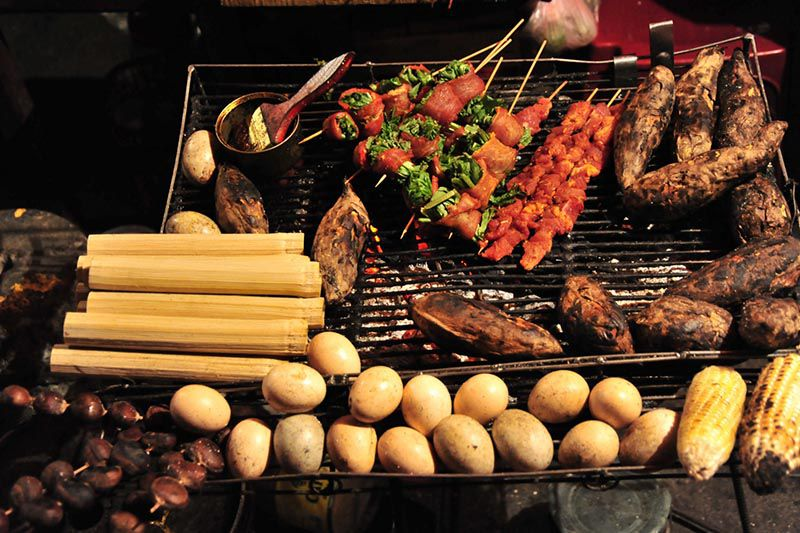

- Phở: The iconic noodle soup, known for its clear, fragrant broth.
- Bún Chả: Grilled pork patties served in a tangy dipping sauce with rice noodles.
- Bún Riêu: A tangy tomato and crab-based noodle soup.
- Chả Cá Lã Vọng: Turmeric-marinated fish grilled with dill.
Central Vietnamese Cuisine: Bold & Spicy
The Central region, once the home of Vietnam’s emperors, boasts a cuisine that is complex, colorful, and often fiery. Reflecting its royal heritage, dishes are meticulously prepared and beautifully presented. This is where you’ll find some of the most distinctive Vietnam regional specialties. The imperial legacy is best explored through Hue cuisine, while the everyday delights are found in the city’s markets. Further south, the food scenes in Da Nang and Hoi An are legendary.
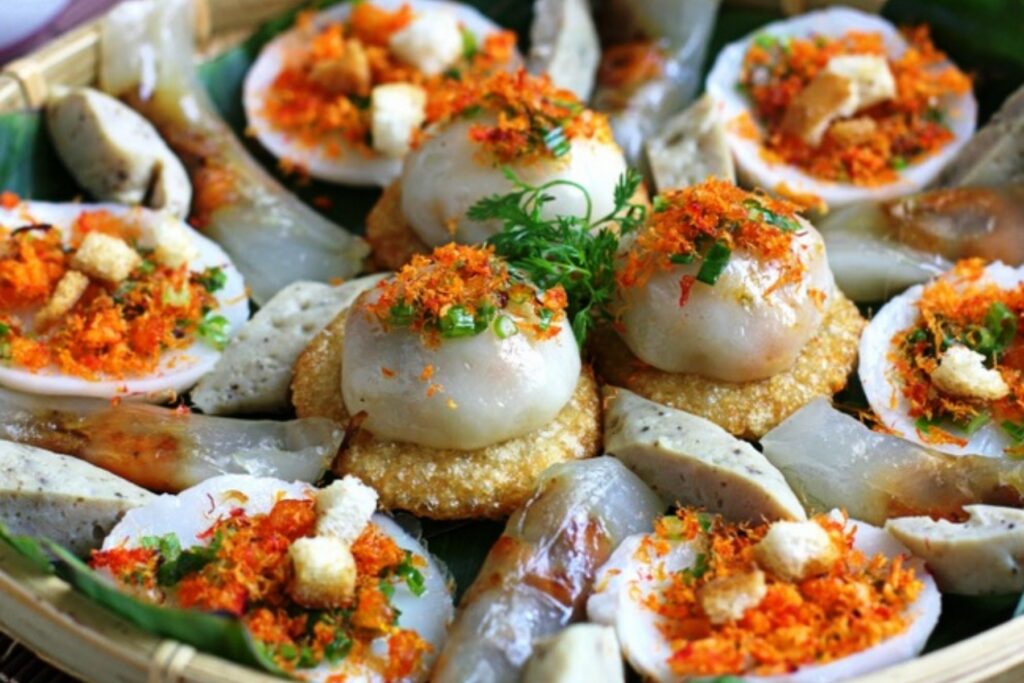

- Bún Bò Huế: A spicy, lemongrass-infused beef noodle soup.
- Mì Quảng: “Mixed noodles” with a turmeric base, shrimp, pork, and rice crackers.
- Cao Lầu: A Hoi An exclusive with unique chewy noodles, pork, and greens.
- Bánh Xèo: Crispy “sizzling crepes” stuffed with fillings, larger and thinner than their southern counterparts.
Southern Vietnamese Cuisine: Sweet & Vibrant
With its tropical climate and fertile soil, Southern cuisine is characterized by sweeter, bolder flavors and a more liberal use of fresh herbs, coconut milk, and sugar. The food is as vibrant and energetic as the people. The best way to explore is through a tour of Ho Chi Minh City’s street food. The city also boasts world-class dining, featured in the top 10 restaurants in Ho Chi Minh City, and excellent plant-based options in our ultimate guide to vegetarian food in HCMC.
- Hủ Tiếu: A versatile pork and seafood-based noodle soup.
- Gỏi Cuốn: Fresh spring rolls with shrimp, pork, and herbs, served with a rich peanut sauce.
- Cơm Tấm: “Broken rice” topped with grilled pork chops, meatloaf, and a sweet fish sauce dressing.
- Bánh Xèo Miền Tây: The southern-style crispy crepe is smaller, thicker, and often uses coconut milk in the batter for a richer flavor.
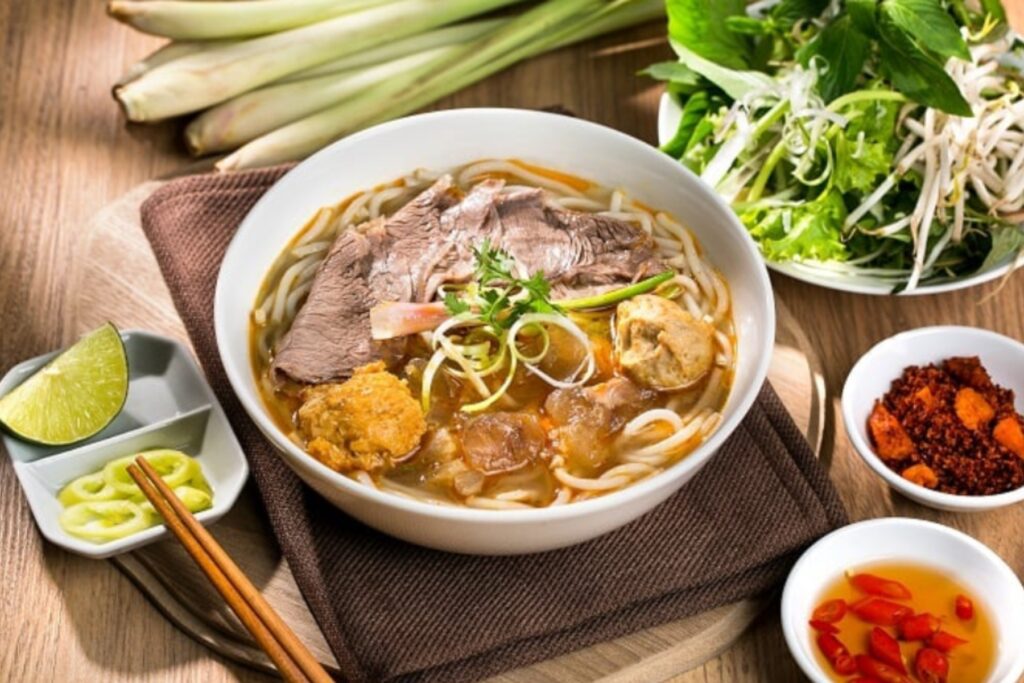

🍽️ Must-Try Dishes Table by Region
| Region | Signature Dishes | Brief Description |
| North | Phở, Bún Chả, Bún Riêu | Subtle, balanced broths; focus on fresh, pure flavors. |
| Center | Bún Bò Huế, Mì Quảng, Cao Lầu | Bold, spicy, and complex flavors with a royal heritage. |
| South | Cơm Tấm, Hủ Tiếu, Bánh Mì | Sweeter, vibrant flavors with extensive use of fresh herbs. |
3. Iconic Vietnamese Dishes You Can’t Miss
While the regional diversity is immense, some dishes have transcended their origins to become national treasures and global ambassadors of Vietnamese cuisine. These are the authentic Vietnamese dishes that you absolutely must try.
Pho: The National Dish
Pho is the soul of Vietnam in a bowl. This noodle soup starts with a broth simmered for hours with spices like star anise, cinnamon, and cloves, creating a deeply aromatic and comforting base. It’s served with soft rice noodles (bánh phở) and topped with either beef (Phở Bò) or chicken (Phở Gà) and a handful of fresh herbs. Its simplicity is deceptive; a great bowl of Pho is a work of art.
Banh Mi: The Legendary Sandwich
A delicious legacy of the French colonial period, the Banh Mi is a masterpiece of textures and flavors. It begins with a light, airy Vietnamese baguette with a crackly crust. Inside, it’s a symphony of savory, rich, and fresh ingredients: a smear of pâté, mayonnaise, various Vietnamese cold cuts, pickled carrots and daikon, fresh cilantro, cucumber, and a potent kick of chili. It is perhaps the world’s greatest sandwich.


Bun Cha: Hanoi’s Signature Dish
This quintessential Hanoi dish is a lunchtime favorite. Smoky, charcoal-grilled pork patties and slices of pork belly are served in a bowl of warm, tangy dipping sauce made from fish sauce, vinegar, and sugar. It comes with a side of rice vermicelli noodles and a mountain of fresh lettuce and herbs. The act of dipping the noodles and herbs into the savory broth with the pork creates the perfect bite every time.
Spring Rolls (Goi Cuon & Cha Gio)
Vietnam offers two famous types of rolls. Gỏi Cuốn are fresh, healthy spring rolls where cooked pork, shrimp, lettuce, and vermicelli are wrapped in translucent rice paper. They are served cool with a rich peanut dipping sauce. Chả Giò (or Nem Rán in the North) are deep-fried spring rolls, with a filling of minced pork, shrimp, mushrooms, and glass noodles wrapped in rice paper and fried until golden and shatteringly crisp. They are often eaten wrapped in lettuce and dipped in nước chấm.
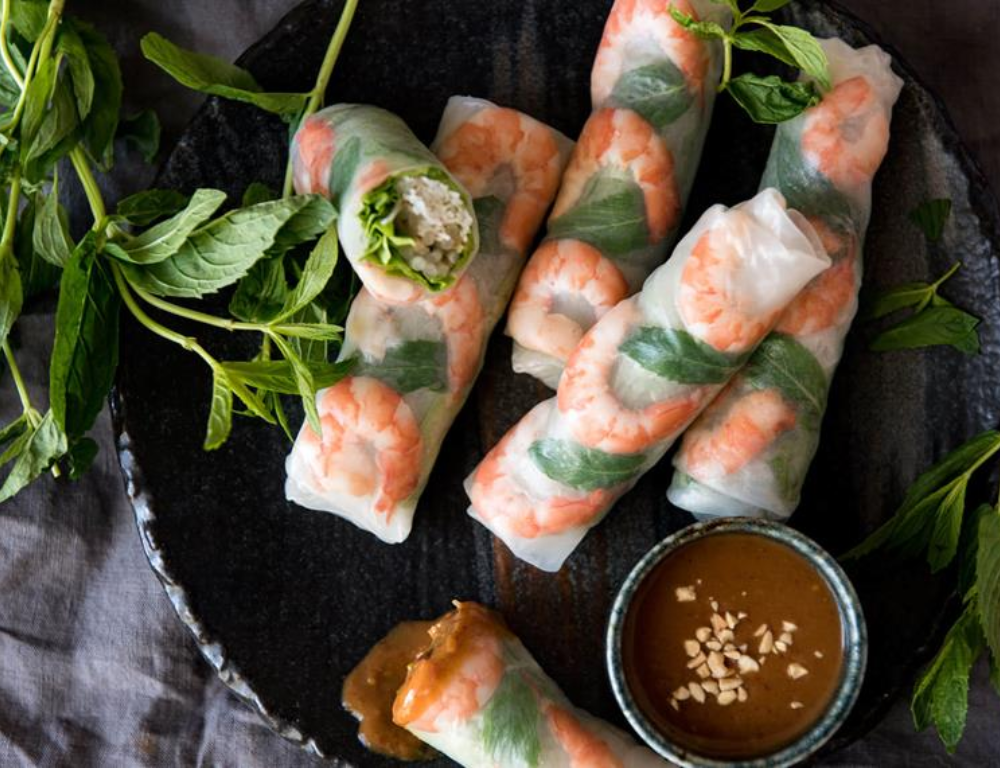

Other Popular Dishes (e.g., Com Tam, Banh Xeo, Cao Lau)
The list of must-try dishes is endless, but be sure to seek out Cơm Tấm (broken rice with grilled pork) in the South, the crispy Bánh Xèo (sizzling crepe), and the unique Cao Lầu noodles of Hoi An. Each represents a key part of the Vietnamese culinary puzzle.
4. Vietnamese Drinks & Beverages: A Refreshing Experience
The drink culture in Vietnam is just as diverse and exciting as its food, forming an inseparable part of the nation’s identity. To truly understand the country is to experience it through its liquids: the intense, fragrant coffee that fuels its cities, the refreshing herbal teas that welcome guests, and the freshly pressed juices that offer respite from the tropical heat.
These beverages are not mere afterthoughts; they are essential Vietnam culinary experiences in their own right. A comprehensive Vietnamese street food guide is incomplete without exploring the carts selling nước mía (sugarcane juice), and any quest for the best food in Vietnam must include its iconic drink pairings.
Vietnamese Coffee: A Unique Brew (Ca Phe Sua Da, Egg Coffee)
Vietnam is a global coffee powerhouse, but its coffee culture is a universe unto itself. It is a ritual defined by the slow, meditative drip of a phin filter and the use of the bold, robust Robusta bean. Forgoing these coffee traditions would be to miss out on some of the most fundamental Vietnam culinary experiences.
- Cà Phê Sữa Đá (Iced Coffee with Condensed Milk): Strong, dark-roast Robusta coffee is slow-dripped through a metal phin filter, mixed with sweet condensed milk, and poured over ice. It’s strong, sweet, and incredibly refreshing.
- Cà Phê Trứng (Egg Coffee): A Hanoi specialty that tastes like a liquid tiramisu. Black coffee is topped with a creamy, meringue-like froth made from whipped egg yolks and condensed milk. You can find the top coffee shops in Hanoi to try this unique brew.
- Coffee Culture: The culture itself is an experience. For the ultimate journey, travel deeper by visiting coffee plantations in the highlands in places like Buon Me Thuot, Vietnam’s coffee capital.
Local Beers & Spirits


Bia Hơi (fresh draught beer) is a national institution. With an abundance of tropical fruits, you’re never far from a stall selling fresh juices. Vietnam also has a rich tea heritage, from the formal art of the Vietnamese tea ceremony to the ubiquitous glass of trà đá (iced tea) served free with meals.
Fresh Juices & Smoothies
With an abundance of tropical fruits, you’re never far from a stall selling fresh juices (nước ép) or smoothies (sinh tố). Try combinations with dragon fruit, passion fruit, mango, and jackfruit.
Traditional Teas
Vietnam has a rich tea heritage. From the formal Art of Vietnamese Tea Ceremony: A Cultural Experience to the ubiquitous glass of trà đá (iced tea) served free with meals, tea is a constant companion in daily life.
5. Culinary Experiences Beyond Eating: Dive Deeper
To truly connect with the cuisine, you must go beyond the plate. Engaging in hands-on Vietnam culinary experiences will give you a lasting appreciation for the culture and skill behind your favorite dishes.
Join a Vietnamese Cooking Class
A cooking class is one of the most rewarding Vietnam culinary experiences. It’s your chance to learn the secrets behind the food you love. There are excellent classes all over the country, from a Hanoi cooking class and a Hoi An cooking class to options in Ho Chi Minh City and even on a Halong Bay cruise.
Embark on a Street Food Tour
A guided tour is the best way to conquer the seemingly chaotic world of street food. A local expert can navigate you to the hidden gems and legendary stalls that you would never find on your own. A Vietnam food tour transforms a simple meal into a story. It’s an essential part of any comprehensive vietnamese street food guide. City-specific tours like the Hanoi Old Quarter street food tour or a royal-themed Hue food tour are fantastic options.
Explore Local Markets (Wet Markets, Night Markets)
Visiting a local market is a feast for the senses. Famous spots like Ben Thanh Market and Dong Xuan Market are popular, but don’t miss more local hubs like Han Market in Da Nang. Night markets like the Phu Quoc Night Market combine shopping with incredible street food.
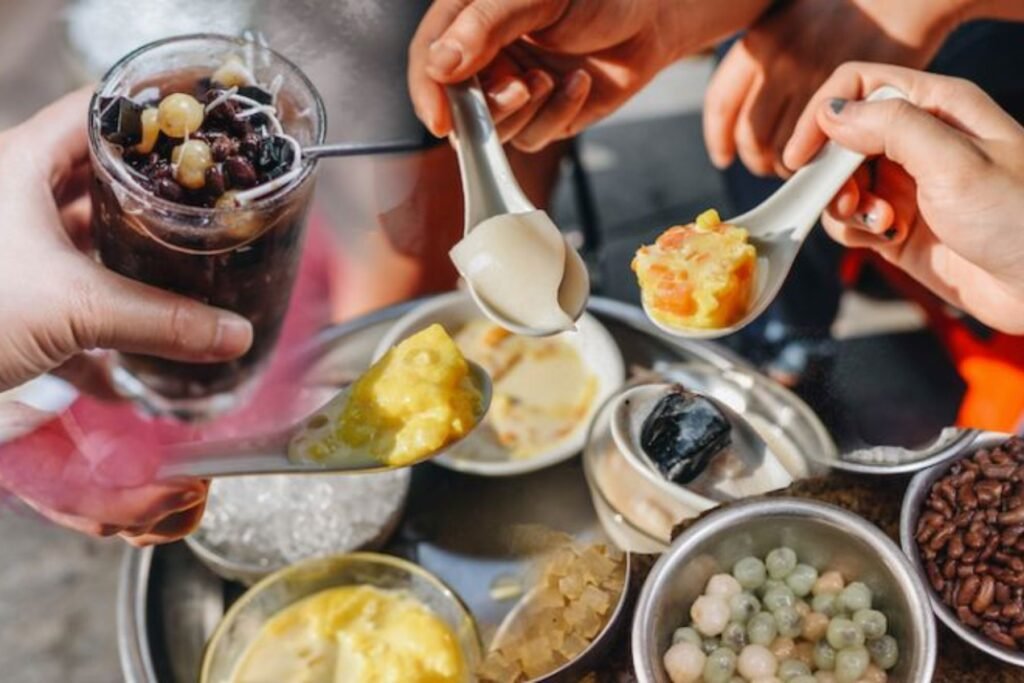

Dine with a Local Family
For the ultimate cultural immersion, consider an experience that offers a taste of Vietnamese home cooking. Sharing a meal with a local family provides unparalleled insight into daily life and the traditions that shape Vietnamese family meals.
Expert Quote
“A Vietnam food tour or a cooking class does more than just teach you about food. It connects you to the people, the history, and the rhythm of daily life. When you learn why a certain herb is used or visit the market with a local, a simple bowl of noodles transforms into a story. These are the Vietnam culinary experiences that stay with you long after you’ve returned home.”
– Ms. Hạnh, Culinary Tour Designer at Sun Getaways Travel
6. Navigating Dietary Needs & Preferences
One of the most exciting aspects of traveling through Vietnam is the opportunity to dive into its world-famous cuisine. But for travelers with specific dietary needs, the thought of navigating a new food landscape can be daunting. The great news is that Vietnamese cooking is incredibly fresh, versatile, and surprisingly accommodating. With a little knowledge and preparation, every traveler can enjoy safe, delicious, and authentic vietnam culinary experiences. This guide will help you navigate vegetarian, vegan, gluten-free, and Halal options with confidence.
Vegetarian & Vegan Options
With a strong Buddhist heritage, vegetarianism (“Chay”) is well-established. Look for signs that say “Quán Chay” or “Cơm Chay.” Many authentic Vietnamese dishes have fantastic vegetarian versions. Check out our guides for the Best Hanoi Vegetarian Restaurants and The Ultimate Guide to Ho Chi Minh City Vegetarian Food. Many menus in places like Nha Trang Food also have dedicated vegetarian sections.
How to Find Vegetarian Food: Look for signs that say “Quán Chay” or “Cơm Chay,” which signify a dedicated vegetarian eatery. These are plentiful, especially on the 1st and 15th days of the lunar month when many Buddhists eat a vegetarian diet. Beyond dedicated “chay” restaurants, many regular eateries can prepare vegetarian versions of their dishes. The key phrase to learn is “Tôi ăn chay” (I am vegetarian). For vegans, it’s important to add “không có trứng” (no eggs) and “không có sữa” (no milk). Most traditional “chay” food is already vegan, but it’s always good to clarify.


Gluten-Free & Allergy Considerations
Since many dishes are based on rice (noodles, paper, grains), Vietnam can be a good destination for gluten-free travelers. However, be cautious of soy sauce (often contains wheat) and cross-contamination. Fish sauce (nước mắm) is almost always gluten-free. Clearly communicating your allergies is key.
Halal Food in Vietnam
While not as widespread as in other Southeast Asian countries, you can find Halal food in major tourist centers, especially near mosques. Our guide to the Top 5 must-try restaurants for Halal Food in Vietnam can help you find certified options.
Where to Find Halal Options: Look for Halal-certified restaurants in the main tourist centers. Ho Chi Minh City has a significant concentration around the Central Mosque in District 1. Hanoi’s Old Quarter also has a growing number of Halal eateries, often serving Vietnamese, Malaysian, or Middle Eastern cuisine. The Cham people, an indigenous Muslim minority in Vietnam, also have their own unique vietnam regional specialties that are Halal, particularly in areas like An Giang province.
7. Dining Etiquette & Cultural Tips
Understanding a few basic customs will enhance your dining experiences and show respect for the local culture.
Using Chopsticks & Spoons
Most noodle soups are eaten with chopsticks in one hand and a spoon in the other. Use the chopsticks to pick up the solids (noodles, meat) and the spoon for the broth. Never stick your chopsticks upright in a bowl of rice, as this resembles incense for the dead.
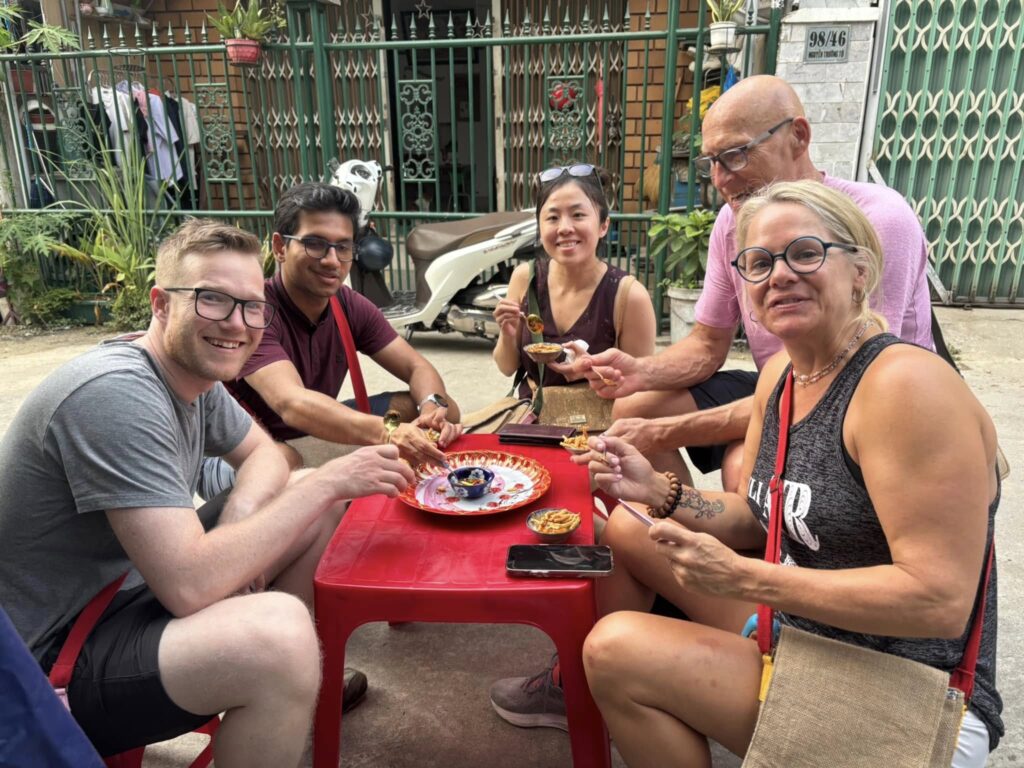

Sharing Dishes & Inviting Others
Vietnamese meals are typically communal. Dishes are placed in the center of the table, and everyone takes what they want for their own bowl. It is polite to be invited to eat before you begin. Our guides on Vietnamese Dining Etiquette & Table Manners and Vietnamese Table Manners: Traditions, Etiquette & Sharing provide more detail.
Tipping in Restaurants
Tipping is not customary or expected, especially at street food stalls and local eateries. In high-end restaurants, a service charge may already be included. For more details, see our Vietnam Tipping Guide: How Much to Tip & When to Tip.
8. Frequently Asked Questions (FAQ)
Answering the most common questions from our vietnamese street food guide.
Is Vietnamese food spicy?
Generally, no. Unlike Thai food, most authentic Vietnamese dishes are not inherently spicy. The heat is usually served on the side in the form of fresh chilies, chili paste, or chili-infused vinegar, allowing you to customize the spice level to your own preference. The main exception is in Central Vietnam, especially Hue, where dishes like Bún Bò Huế are intentionally spicy.
Is it safe to eat street food in Vietnam?
Yes, for the most part, it is very safe. By following the tips in this guide—choosing busy stalls with high turnover where you can see the food being cooked fresh—you can minimize any risk. Millions of locals eat street food every day without issue. A good Vietnam food tour will only take you to vetted, hygienic stalls.
What is the best city for food in Vietnam?
This is an impossible question to answer! Each city is a champion of its own Vietnam regional specialties. Hanoi is a must for Pho and Bun Cha lovers. Hue is heaven for those who love bold, spicy flavors. Ho Chi Minh City offers the greatest sheer variety. The real answer for the best food in Vietnam depends entirely on your personal taste.
Can I find vegetarian food easily in Vietnam?
Yes, very easily. Vietnam has a strong Buddhist tradition, so vegetarian (“Chay”) food is common and delicious. Look for restaurants with a “Quán Chay” sign. They often feature incredible mock meats and creative tofu dishes.
Vietnamese cuisine is an intricate tapestry woven from history, geography, and an undeniable passion for life. It is a journey of discovery, where every meal offers a new perspective and every flavor tells a story. The Vietnam culinary experiences available are some of the most authentic and memorable you can have while traveling. So pull up a stool, grab your chopsticks, and get ready to taste the true heart of Vietnam.


Ready for a culinary journey of a lifetime? Explore our authentic Vietnam food tours, or let us customize your delicious adventure!
About the Author & Why Trust Us?
This guide was written by the expert team at Sun Getaways Travel. As passionate foodies and long-term residents of Vietnam, we have spent years exploring the country’s deepest culinary traditions, from the most famous restaurants to the humblest street stalls. Our mission is to be the most trusted resource for travelers seeking authentic Vietnam culinary experiences.
Why Trust Us?
- Local Expertise: We live and eat here. Our recommendations are based on years of on-the-ground experience, not just a quick visit. We can guide you to the truly best food in Vietnam.
- Commitment to Authenticity: We champion experiences that support local families and showcase the real culture behind authentic Vietnamese dishes, steering you away from tourist traps.
- Vetted & Safe Tours: Every partner and vendor on our Vietnam food tour offerings is vetted for quality, hygiene, and service, so you can explore with peace of mind.
- Trusted by Travelers: Our reputation is built on delivering delicious, insightful, and memorable culinary journeys that highlight the best Vietnam regional specialties and street food. We’re more than a company; we’re your personal vietnamese street food guide.
Ask a question
Leave a Comment (0)
No questions yet. Be the first to ask a question!

















